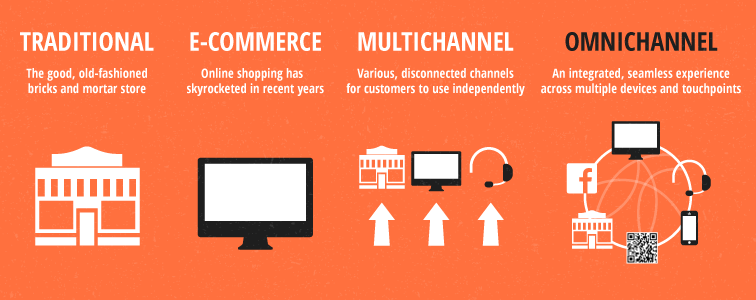When it comes to positioning a product or service, businesses often grapple with a multitude of marketing channels, each promising a slice of success. Even if you can narrow it down to the best options, what do you say? What’s your message?
From the social media giants like Facebook and Instagram to content-driven mediums such as blogs and podcasts, the choices seem endless.
In this post, we will delve into the intricacies of product messaging, exploring tactful approaches that can set your business apart from the competition with a bit of flair and originality.
Their expertise has helped Nextiva grow its brand and overall business
The Challenge of Omni-Channel Marketing
In the complex realm of marketing, the concept of omnichannel marketing has taken center stage. Unlike simply marketing to multiple channels, this approach emphasizes the significance of harnessing multiple channels to build a seamless experience to amplify your brand’s visibility:

Gone are the days when thriving on a single marketing channel was sufficient. Enterprises that initially found success through a singular approach, like Facebook, Dropbox or Yelp, have realized the necessity of broader engagement.
However, a pertinent question remains: Which channels should be given precedence?
Well, for one thing, you should avoid the temptation of falling into a spaghetti marketing strategy at all costs:
But the solution is probably not too far from it in scope.
How to Identify the Right Channels
Unless you’re fortunate enough to have unlimited resources for your marketing plan, you’ll need a calculated plan for how to approach each channel that you test out your product messaging on.
As a start, you should look for similar content and placements by your competitors. For example, if your brand happens to sell camping equipment and a competitor brand of yours appears to be investing heavily in affiliate marketing channels through influencers and blogs, chances are it is working for them.
Now, just because you see a competitor brand pop up in any placement doesn’t automatically mean it’s working for them, but you ought to pay close attention to the duration of how long your competitors are using different advertising formats.
If you’re noticing a dearth of paid search ads from your competition, odds are that it’s not the most lucrative placement for the type of products being sold. The key to understanding which channels you ought to be in is as important as knowing which ones not to be on.
You can save yourself a lot of trial by error by intuiting lessons from your opponents’ presence and absence from certain channels.
At the end of the day, experimentation forms the crux of this strategy. Allocate resources to a selection of marketing channels that align with your target audience and business goals.
If you’re one of the first players in your industry and competition appears to be low, you may have to cast a wide net from the onset to discover which channels work best for you:

Just be sure to keep it limited. When operating with limited resources, it quickly becomes unrealistic to be investing in practically every channel you can.
Focus your efforts on two or three that return the best results. But make sure to pay attention to every touchpoint that your customers go through and evaluate how each placement can be improved with your brand’s messaging.
And above all else, make sure your brand messaging is consistent across all channels.
Audience members will have strong impressions of your brand when you messaging is identical across all channels where you’re present, creating a sense of homogeny and continuity.
Locating Audience Hangouts and Playing to One’s Strengths
Before immersing yourself in an ocean of marketing channels, it’s crucial to consider two essential factors:
- Where does the target audience frequent?
- What channels complement your business’s strengths?
You’ll save yourself a lot of headaches and resources if you put forth the effort to research where your audience is mostly present.
After that, you have to ask how your brand, its content, and its story can have a place in those channels. For instance:
- Service brands tend to perform very well with paid search ads on search engines.
- Product brands tend to perform better with ecommerce ad campaigns on Google.
The idea of establishing a pillar channel serves as a foundation for this strategy. Maybe it’s PPC, SEO, or a group of social media influencers that sympathize with your brand’s vision.
You’ll find that a pillar channel is a central platform for content creation, engagement and, of course, positioning your offer.
Repurposing Content to Spread Your Brand Message
Repurposing content is a potent elixir for time-crunched marketers. You rarely ever have to craft unique content for each platform.
Instead, weave your core content into a tapestry spanning all channels that you’re present on. If your messaging originates with a product-integrated blog post, try converting the blog into a script for a podcast. Alternatively, you can splice up sections of the blog post and convert them into social media posts, again featuring your product.
With that, you can take the podcast script you adapted from the blog and refine it into a short-form video script. And the repurposing list keeps going:

There’s no need to reinvent the wheel each time. When you leverage the content you’ve already created and maximize its reach across a variety of platforms, you’ll gain the benefits of an omnichannel, widespread approach with one pillar piece of content.
The Golden Rule of Product Messaging
Effective product messaging isn’t just about conveying information – it’s about creating a connection.
It’s about crafting a narrative that resonates with your audience’s needs and challenges. Just as a lighthouse beacon offers reassurance to weary sailors, your messaging should offer a comforting assurance that your brand understands and addresses their concerns.
But the golden rule we follow with writing product copy in any placement is to constantly tweak the language.
Not only that, but we also test versions of copy against each other and scrutinize the heck out of each variation, letting the data guide us in how to craft better and better language.
In the end, it’s all a reflection of how your audience resonates with your brand and products. You just have to keep an ear open to what they respond well to and react to it.
Last Thoughts on Perfecting Your Product Messaging
The art of masterful product messaging requires empathy and experimentation to capture the hearts and minds of your audience.
Remember that each message is an opportunity to tell a story, inspire action and leave an indelible mark. Your messaging isn’t just about what your product does – it’s about the journey and experience it promises. It’s about igniting curiosity, sparking interest and building relationships.
Repurposed from our Marketing School podcast.



